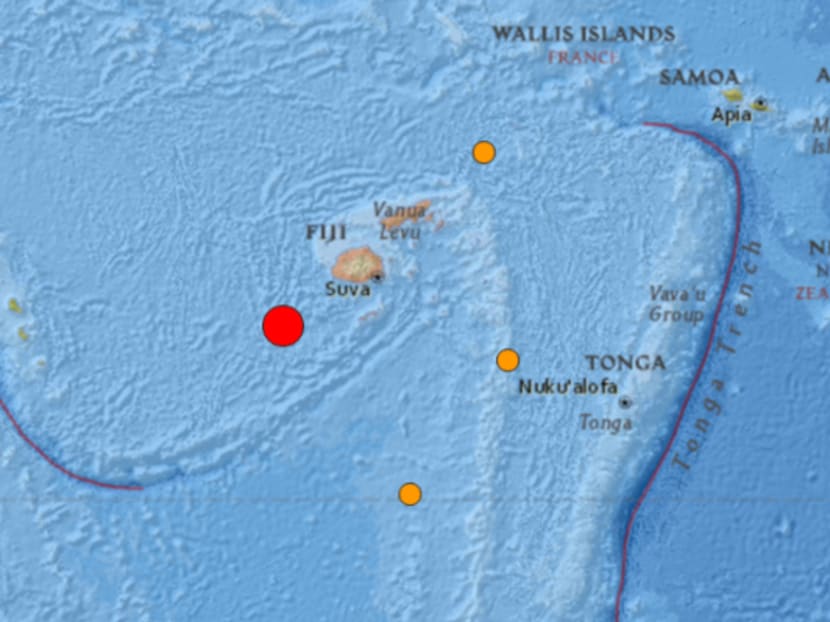Tsunami threat passes after 7.2-magnitude quake off Fiji
SYDNEY — A shallow 7.2-magnitude earthquake struck off the coast of Fiji Wednesday (Jan 4), the US Geological Survey said, but there were no reports of damage and a tsunami warning was lifted.

A shallow 7.2-magnitude earthquake struck off the coast of Fiji on Wednesday, the US Geological Survey said, triggering a local tsunami warning. Screencap from USGS website
SYDNEY — A shallow 7.2-magnitude earthquake struck off the coast of Fiji Wednesday (Jan 4), the US Geological Survey said, but there were no reports of damage and a tsunami warning was lifted.
The quake hit at a depth of 15km, some 221km from Nadi and 283km from the Fijian capital Suva and was followed by two smaller aftershocks.
The Pacific Tsunami Warning Centre initially said hazardous waves were possible within 300km of the epicentre, but later reported the threat had passed.
Geoscience Australia said structural damage from shaking was possible only within an estimated 110km radius, well away from the nearest land.
Residents in Nadi on the western side of the main Fijian island of Viti Levu said they felt a slight shake but there were no reports of damage.
"It was 200km off the coast which was a saving grace in terms of shaking and damage," Geoscience Australia seismologist Jonathan Bathgate told AFP.
The area lies on the Pacific "Ring of Fire", a highly active tectonic zone that frequently experiences earthquakes and volcanic eruptions.
A deep 6.3 quake hit south of Fiji on Monday while a 7.9 tremor struck near Papua New Guinea last month.
There is rarely any damage and Dr Bathgate said the activity was largely driven by movements in the Australian tectonic plate.
"It is moving seven centimetres to the northeast every year and that's what causes the quakes in the (Pacific) region," he said.
"They are usually quite deep. What was unusual about this one was it was quite shallow." AFP






